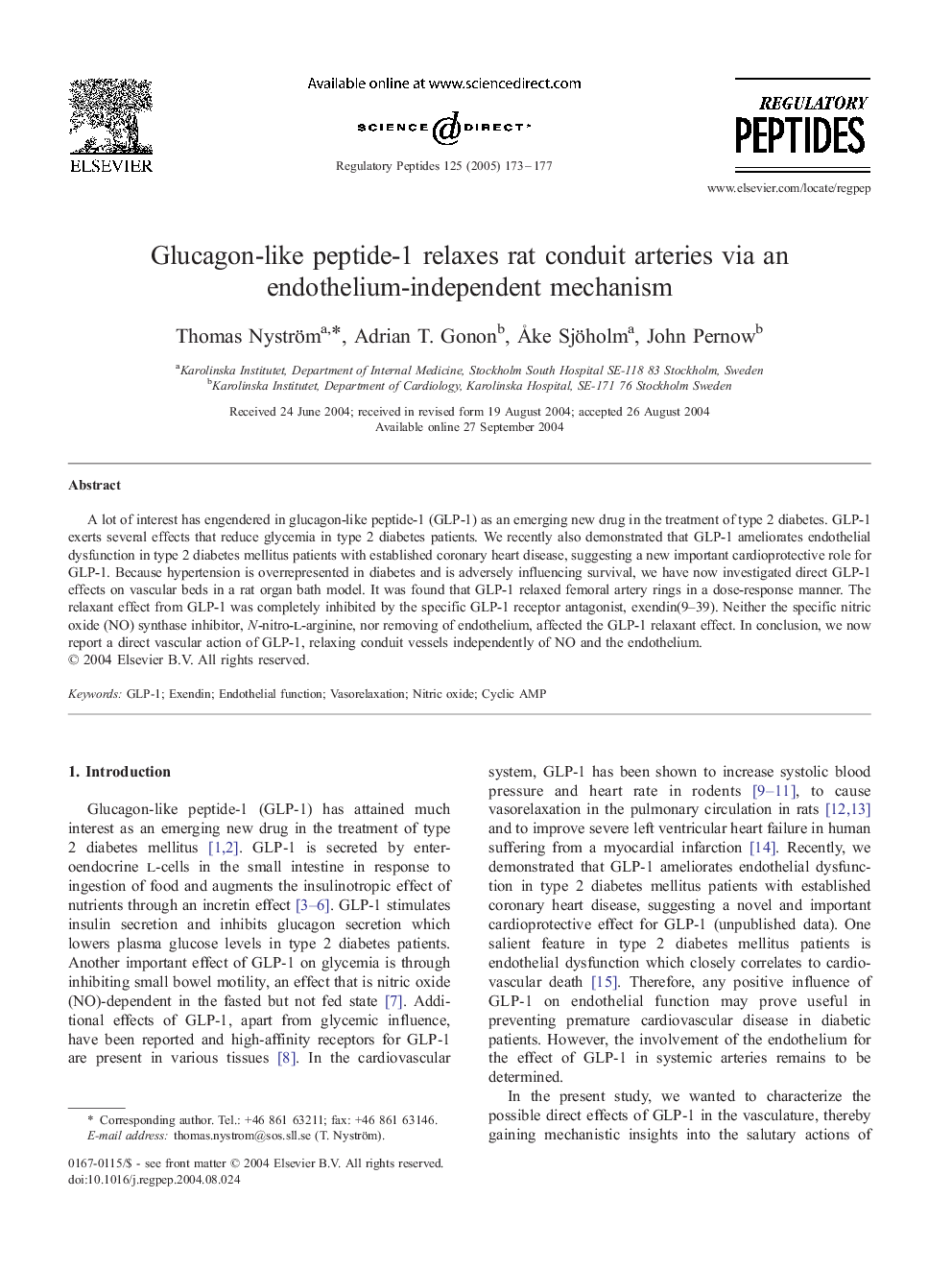| Article ID | Journal | Published Year | Pages | File Type |
|---|---|---|---|---|
| 9894516 | Regulatory Peptides | 2005 | 5 Pages |
Abstract
A lot of interest has engendered in glucagon-like peptide-1 (GLP-1) as an emerging new drug in the treatment of type 2 diabetes. GLP-1 exerts several effects that reduce glycemia in type 2 diabetes patients. We recently also demonstrated that GLP-1 ameliorates endothelial dysfunction in type 2 diabetes mellitus patients with established coronary heart disease, suggesting a new important cardioprotective role for GLP-1. Because hypertension is overrepresented in diabetes and is adversely influencing survival, we have now investigated direct GLP-1 effects on vascular beds in a rat organ bath model. It was found that GLP-1 relaxed femoral artery rings in a dose-response manner. The relaxant effect from GLP-1 was completely inhibited by the specific GLP-1 receptor antagonist, exendin(9-39). Neither the specific nitric oxide (NO) synthase inhibitor, N-nitro-l-arginine, nor removing of endothelium, affected the GLP-1 relaxant effect. In conclusion, we now report a direct vascular action of GLP-1, relaxing conduit vessels independently of NO and the endothelium.
Related Topics
Life Sciences
Biochemistry, Genetics and Molecular Biology
Biochemistry
Authors
Thomas Nyström, Adrian T. Gonon, Ã
ke Sjöholm, John Pernow,
